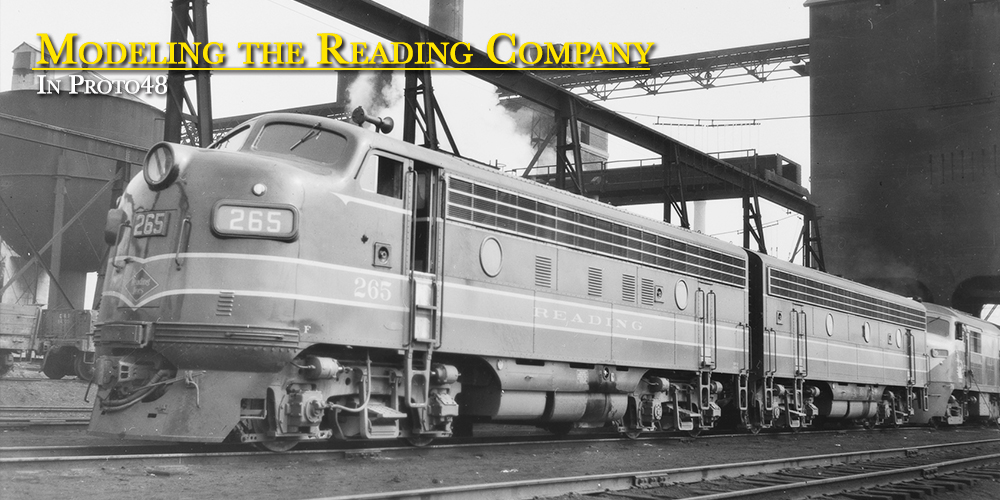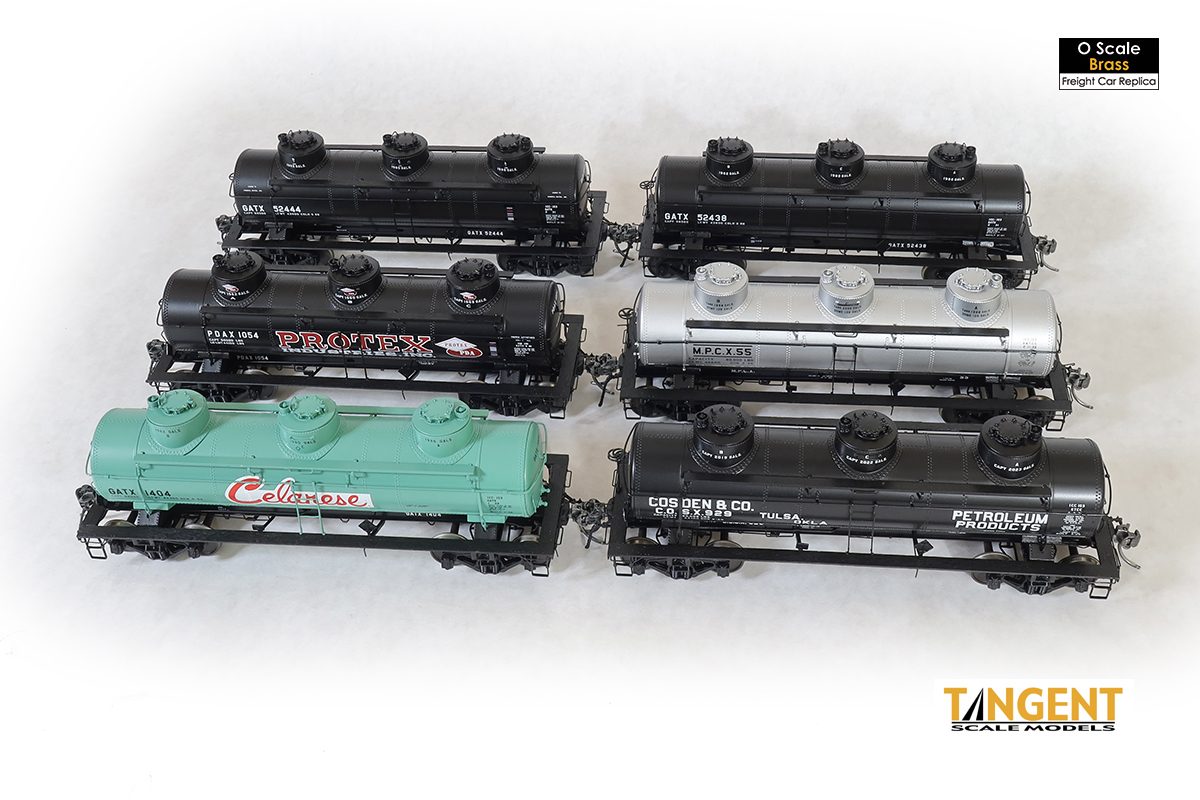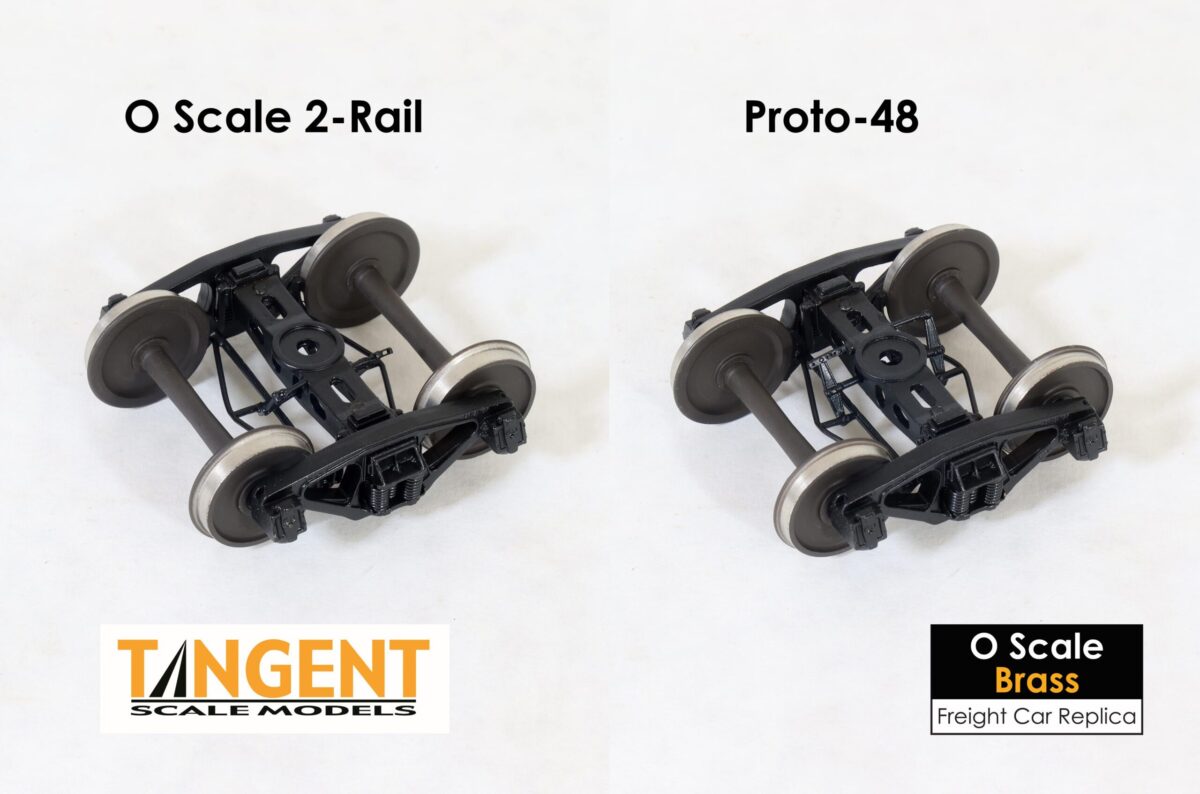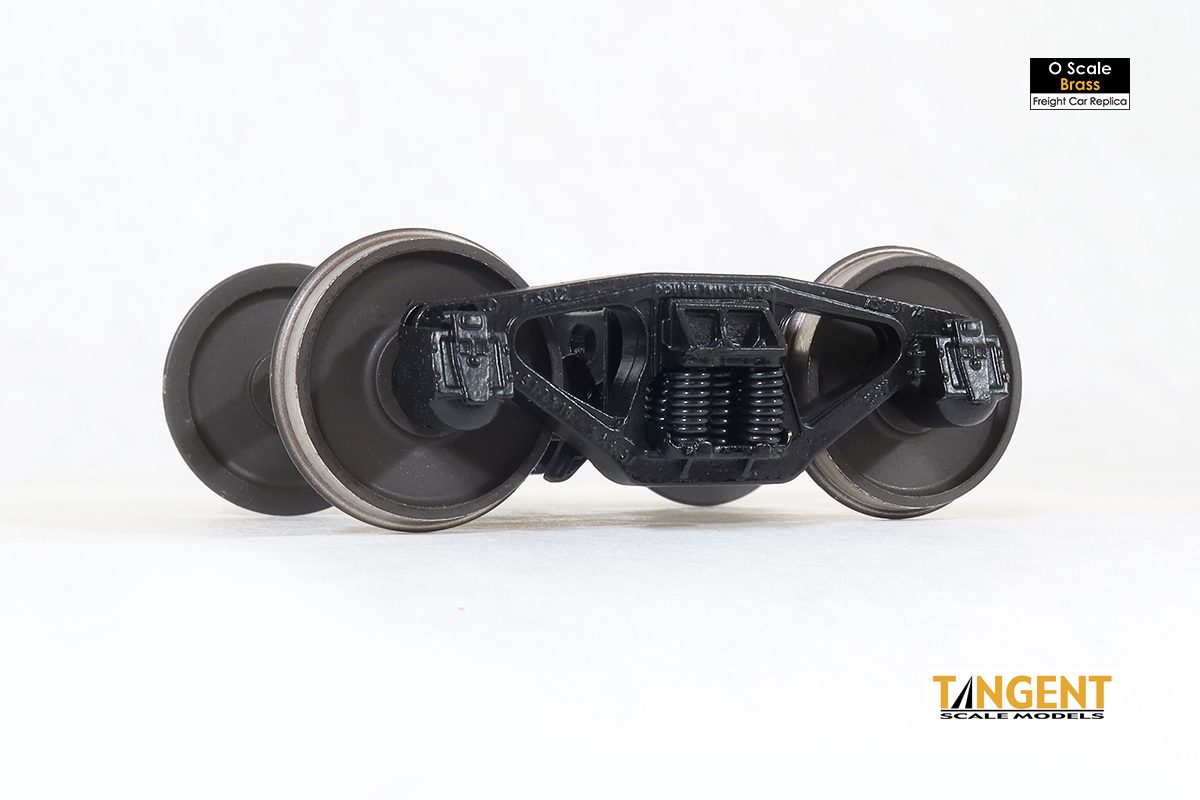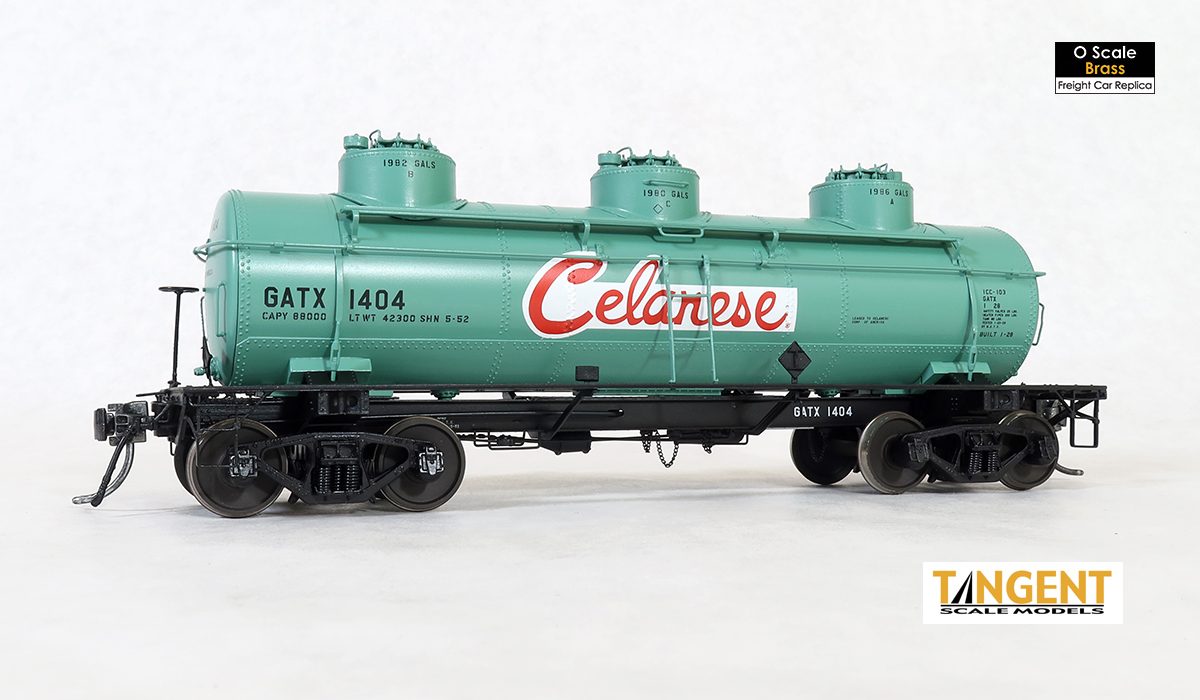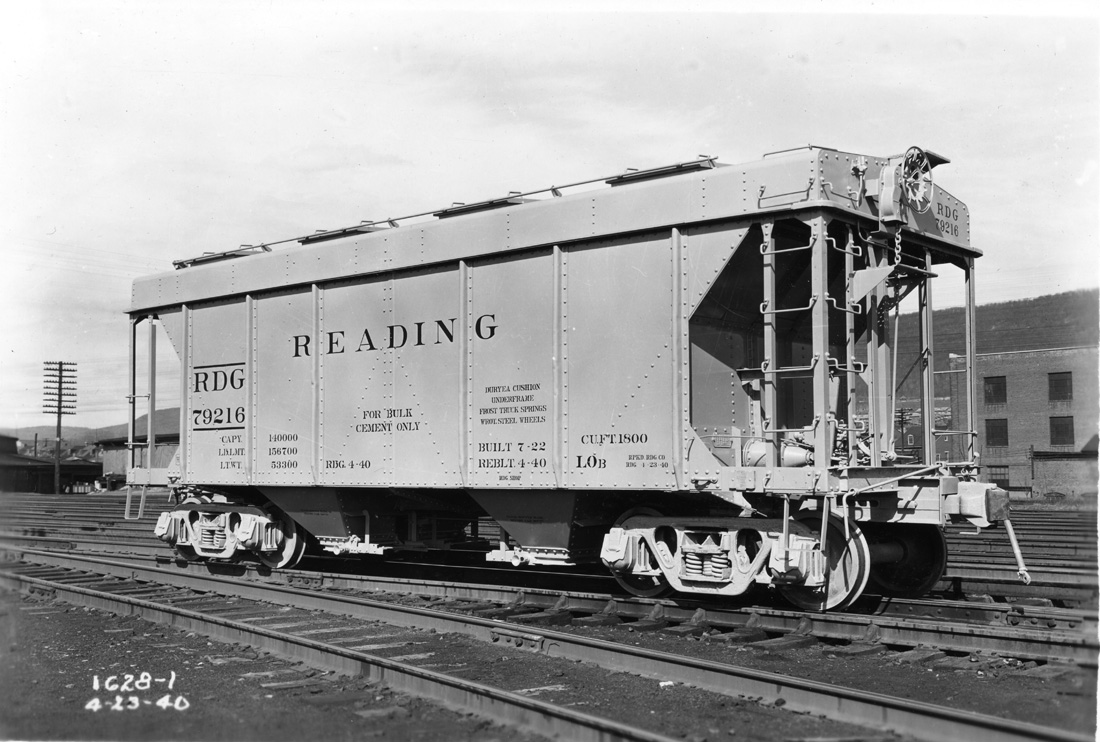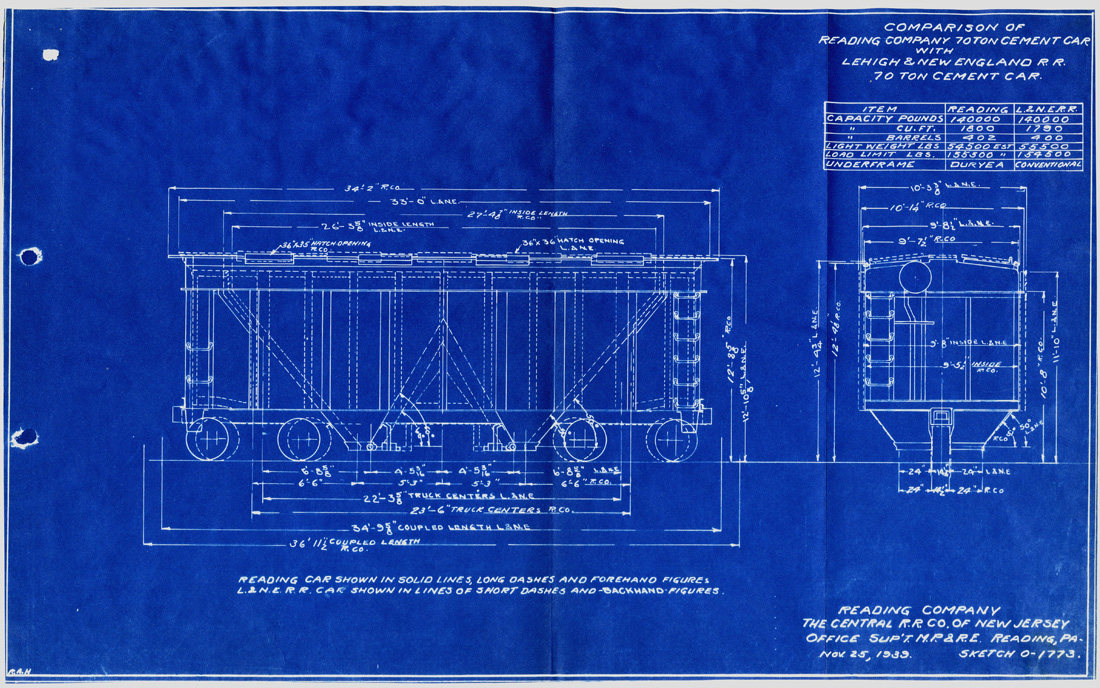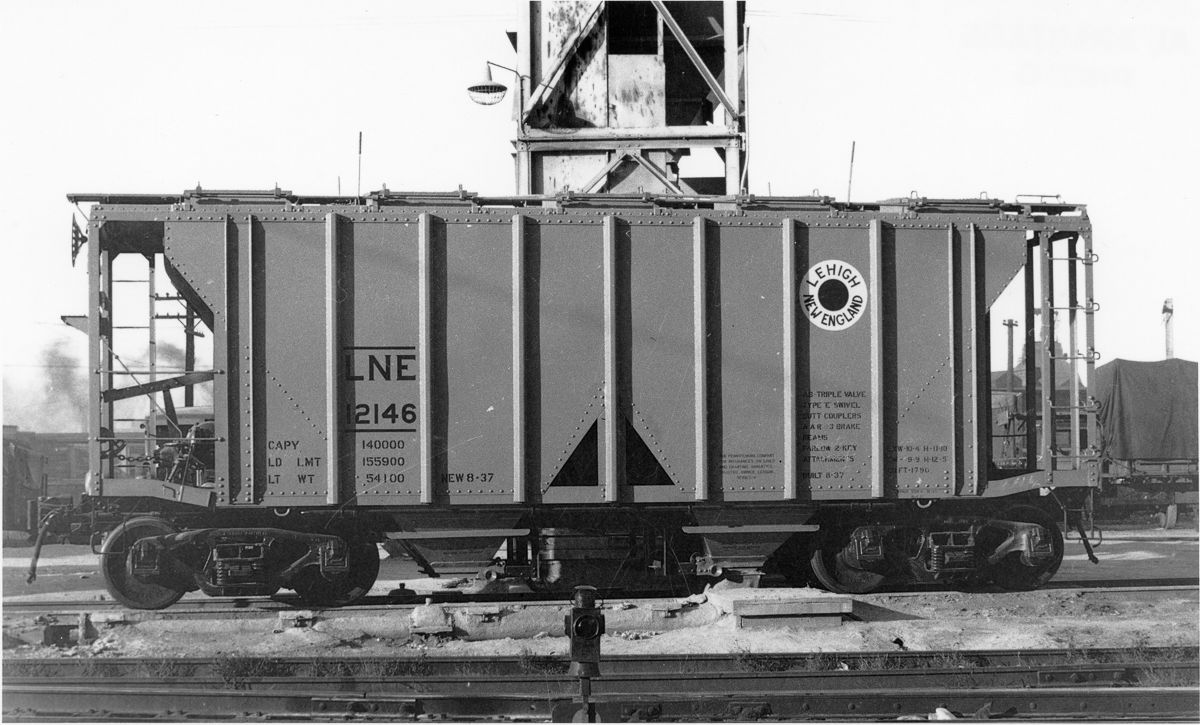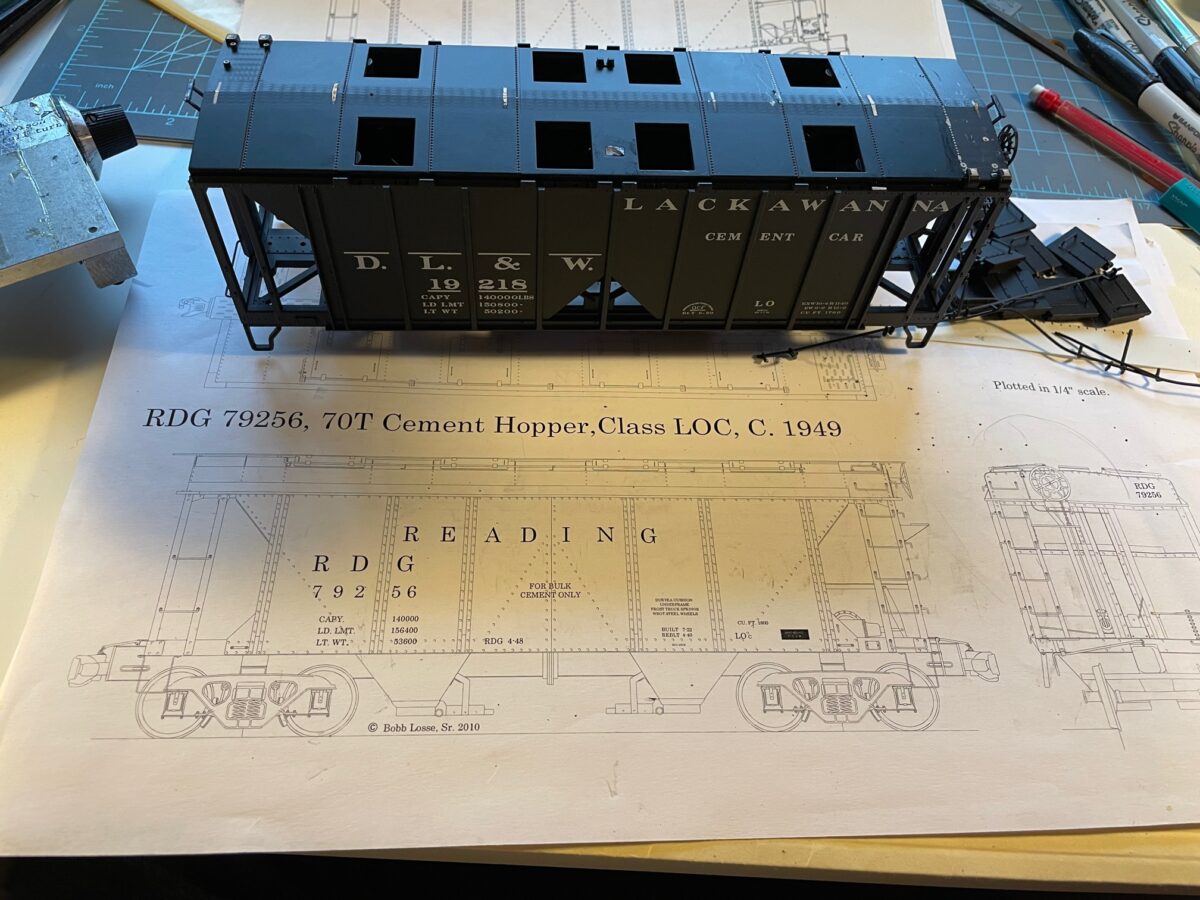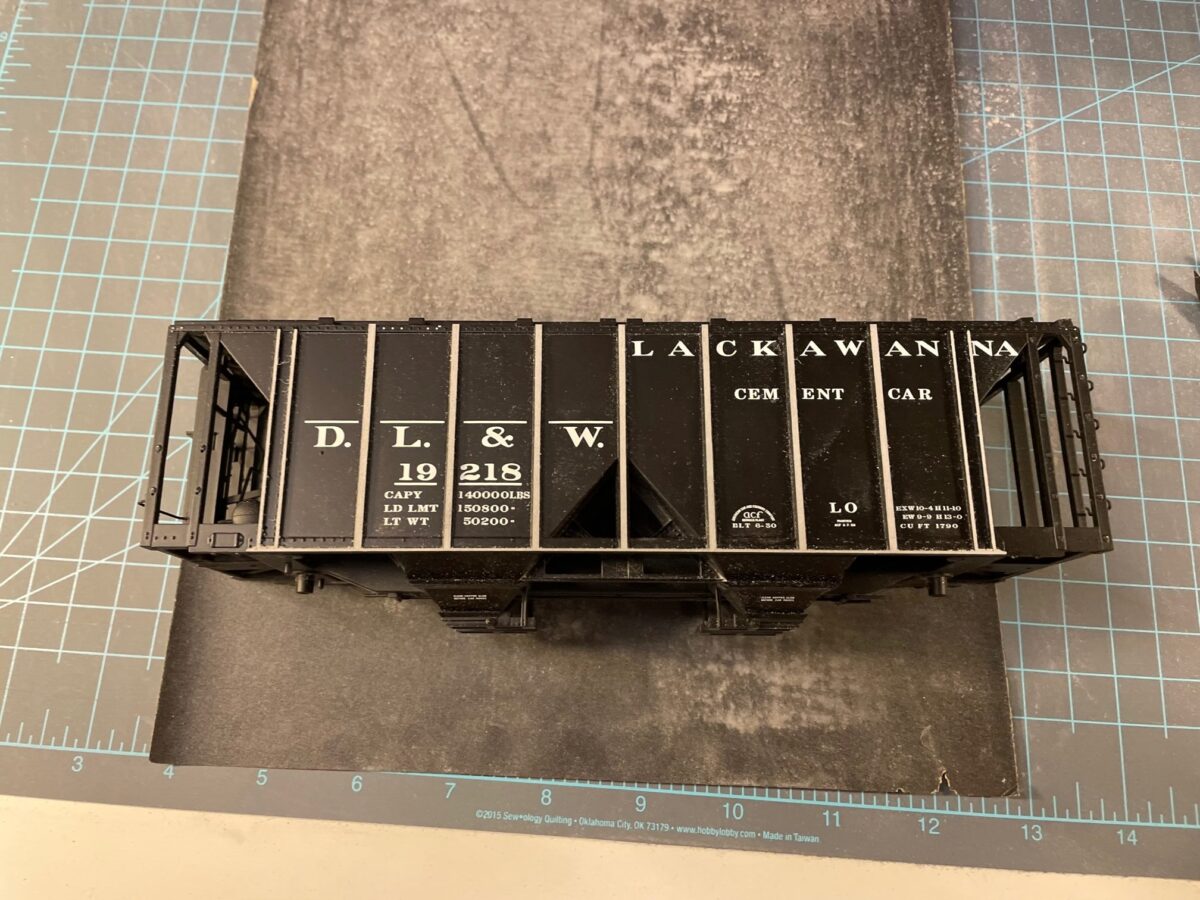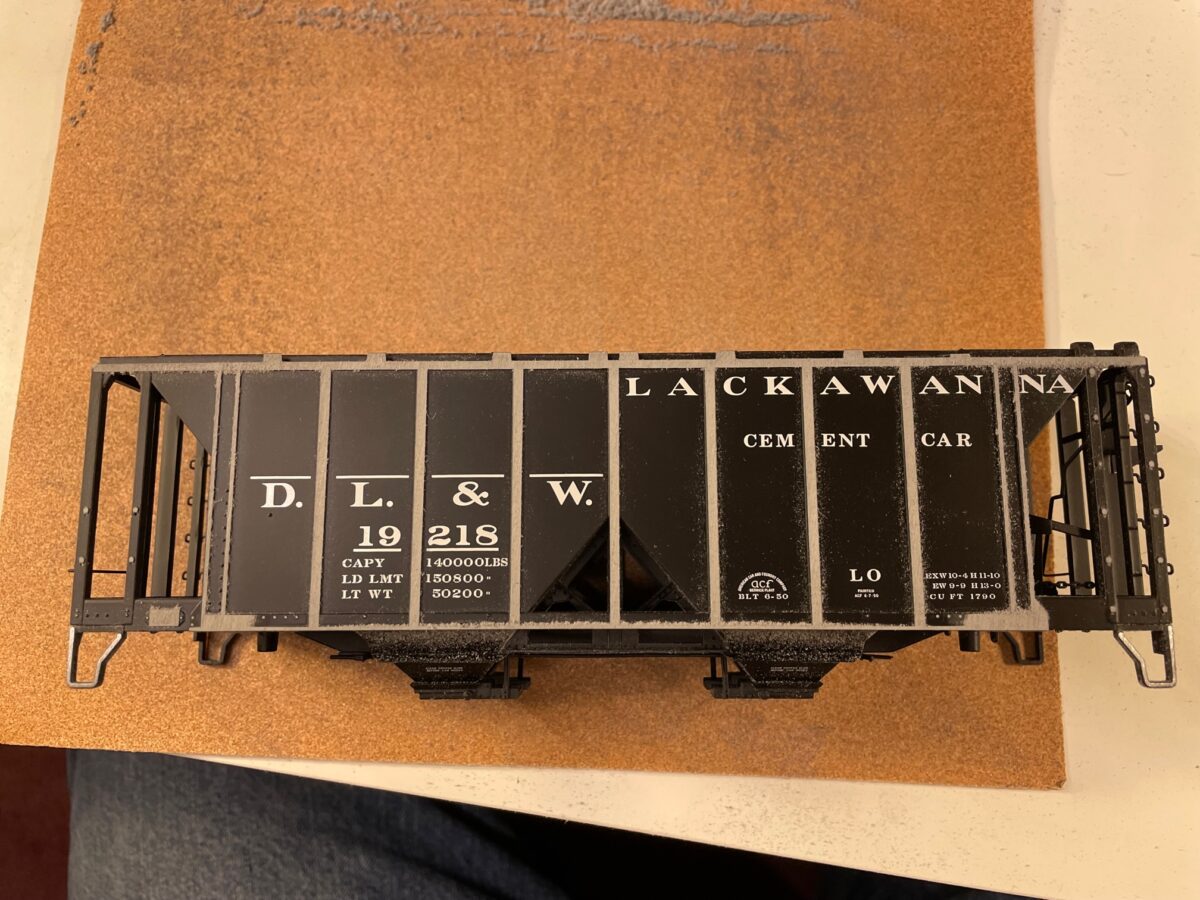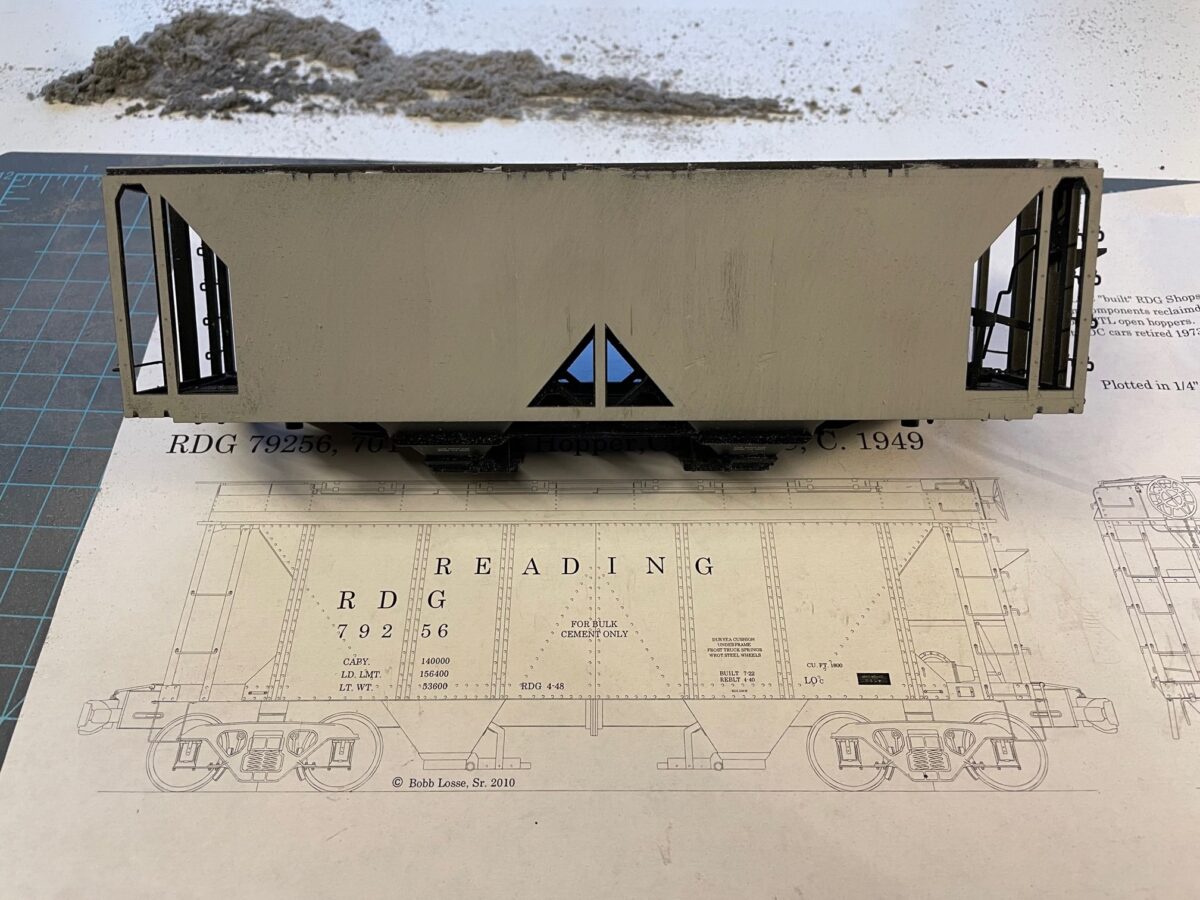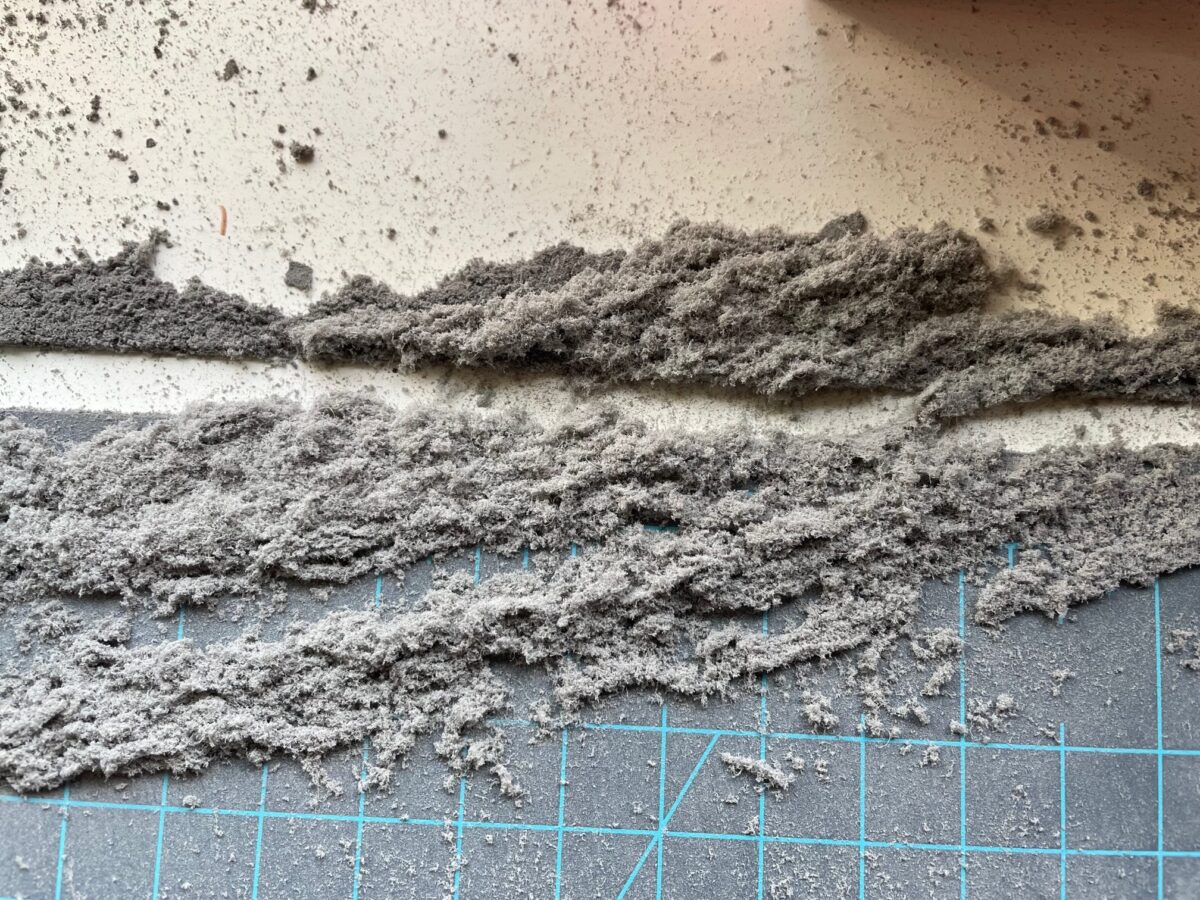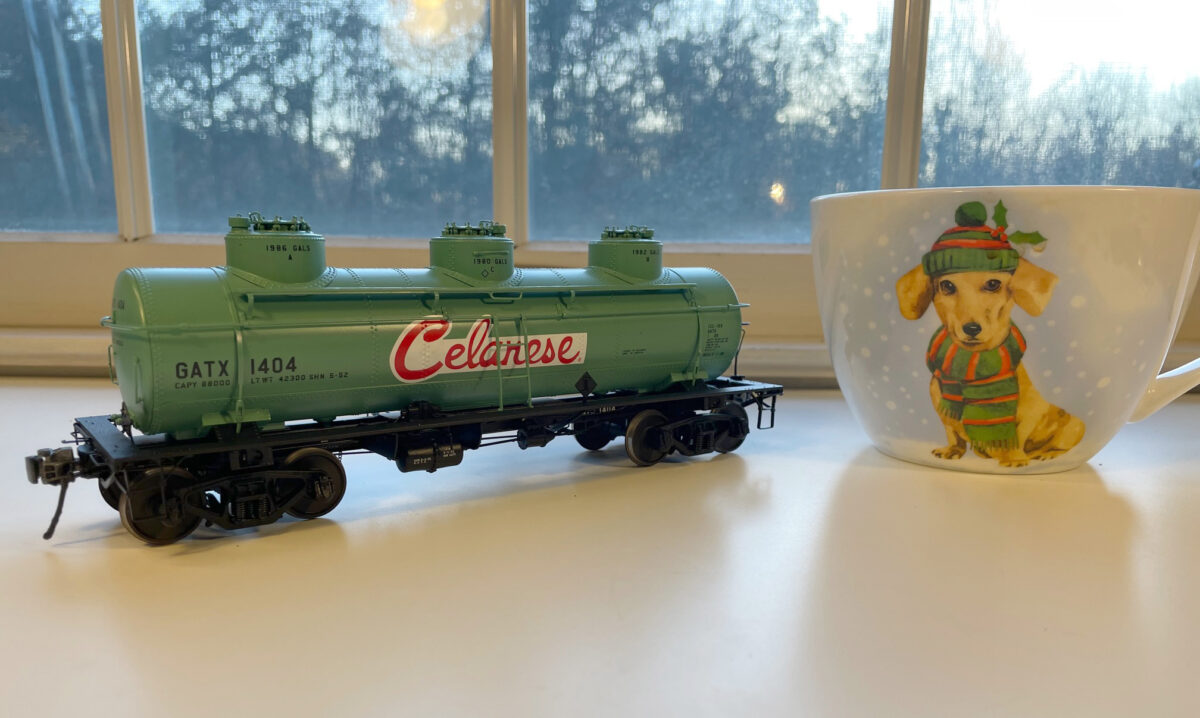
My General American 1928-Design 6000 Gallon 3-Compartment Tank Car from Tangent Scale Models arrived yesterday. This morning I’m enjoying my morning coffee in my dachshund Christmas cup looking it over this fine new model release.
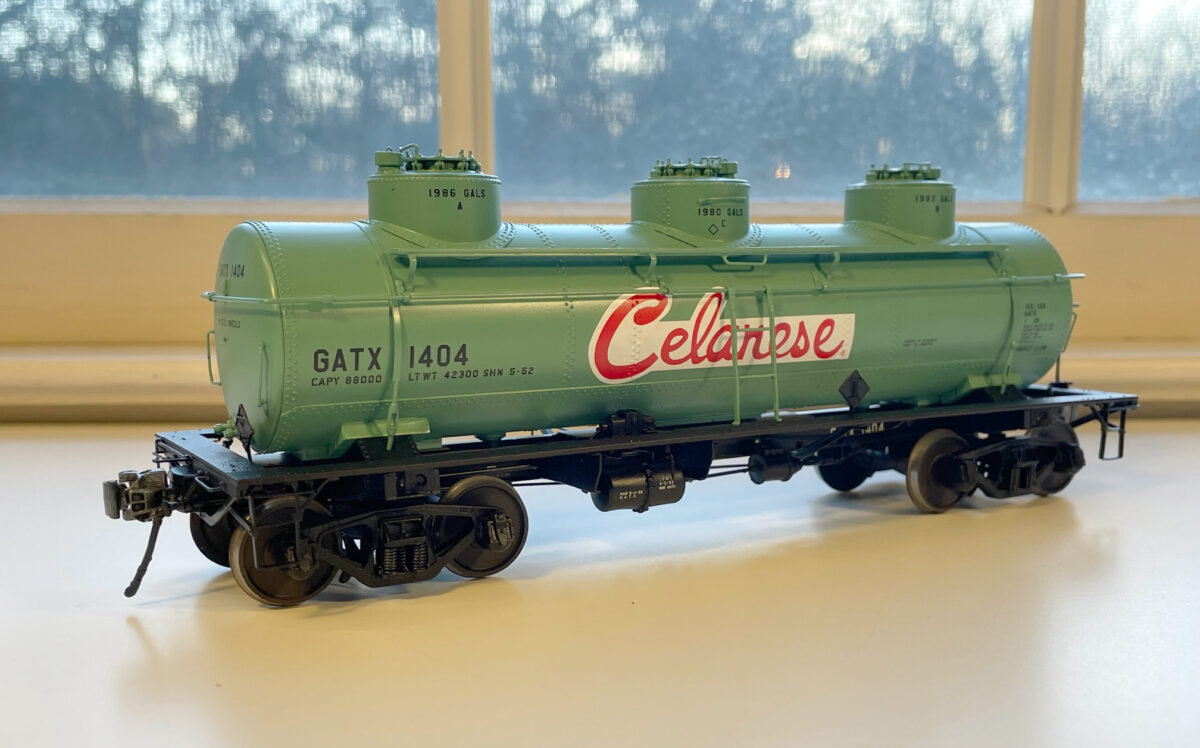
This is Tangent Scale Models first model released in O Scale. The model is offered with either O Scale or Proto48 trucks. They are not the first to do that in O Scale, both RY Models and Protocraft have sold their models that way.
First Impressions:
It really is a nice car!
It is well engineered, well decorated and a solid model. Handling it on the workbench, I can say it is not as fragile as some highly detailed O Scale models in the past.
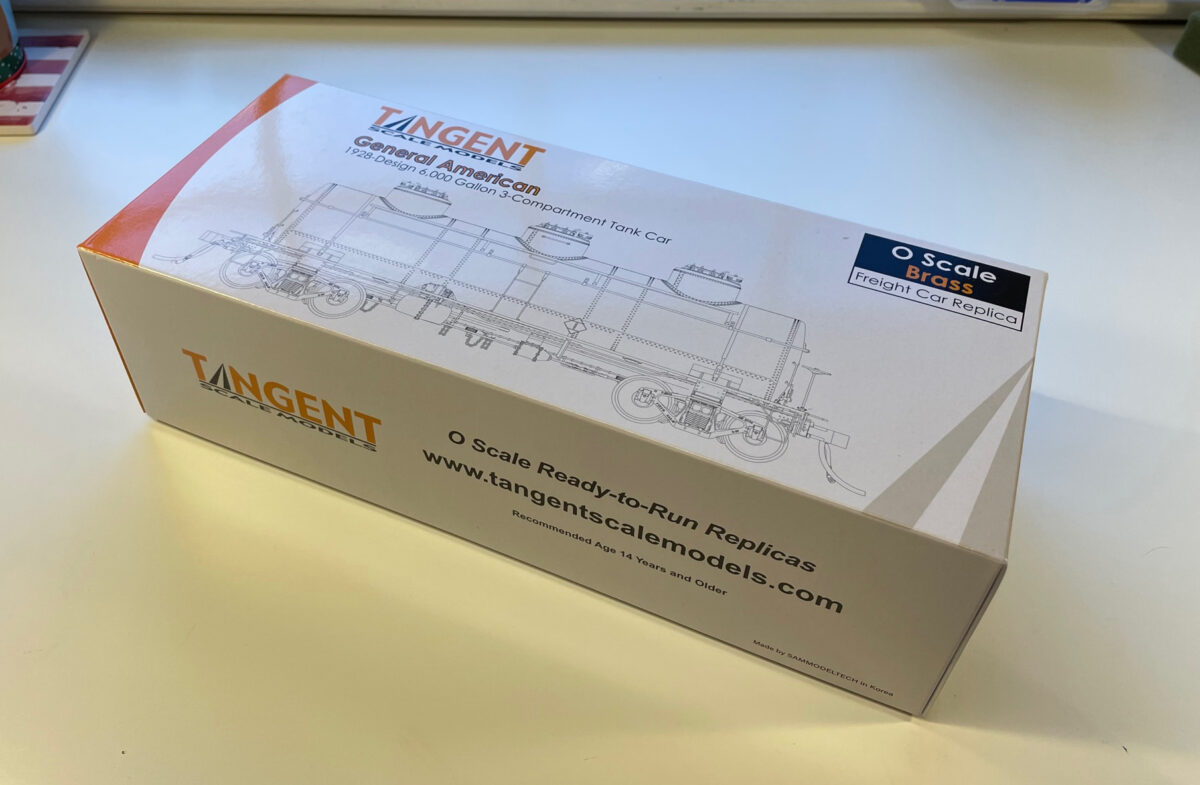
Some things are different from most brass imports. Starting with the box. Much thinner construction than often seen in brass models. Yet strong enough to make the trip to the US and keep the model safe from damage.
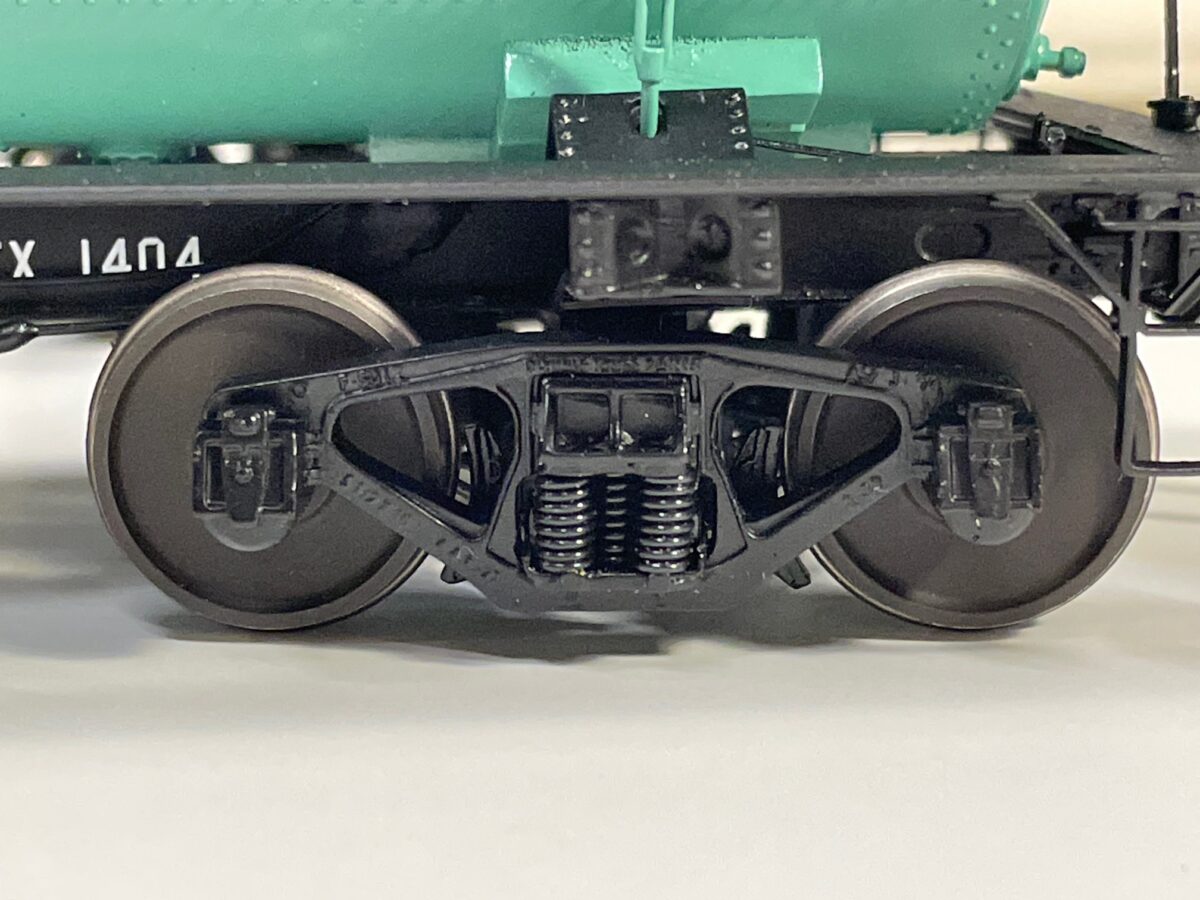
The Proto48 Trucks are nicely done and very free rolling. They have roller bearings in the journals. The spring cluster is nicely modeled compared to the usual ball point pen type springs used on some trucks. You can’t see through the spring cluster on the prototype and you can’t see through it on the model either.
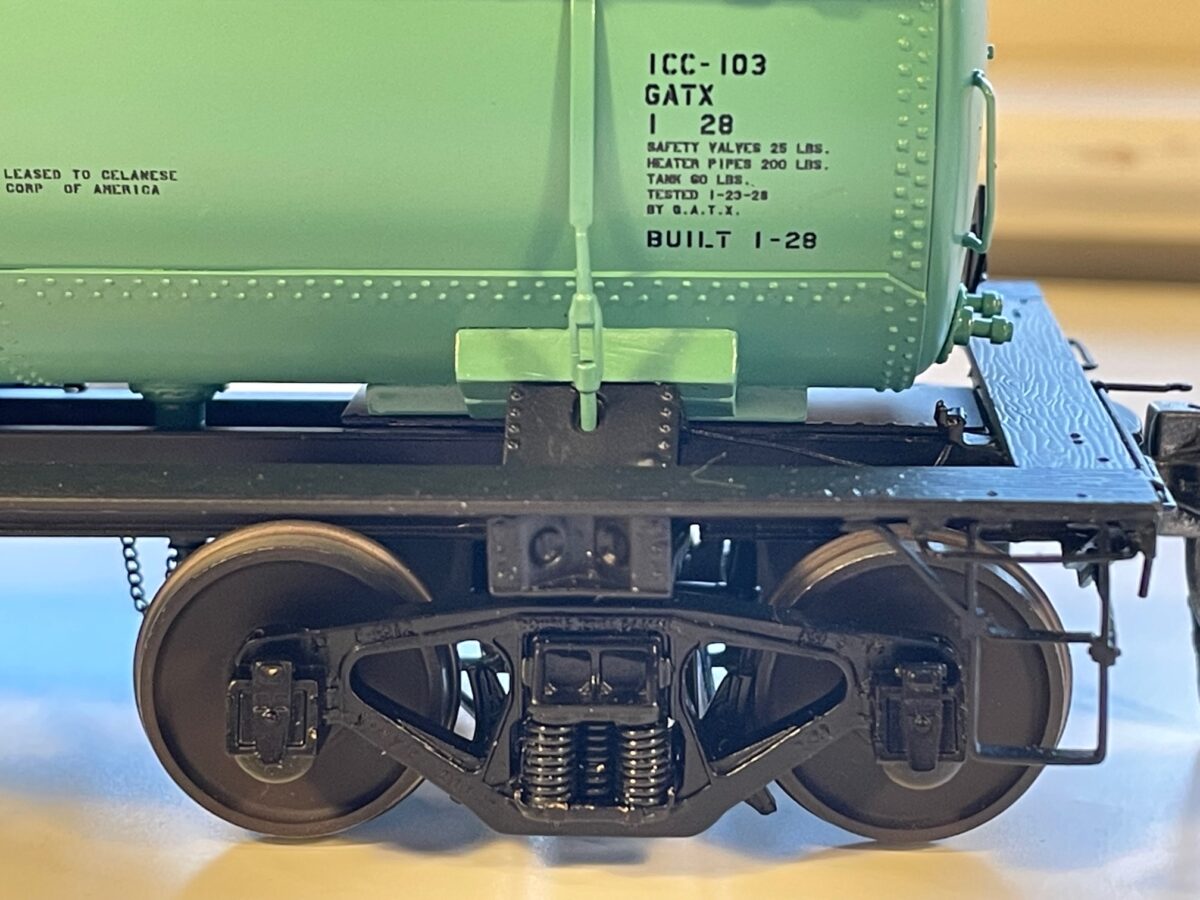
Here you can see the fine decoration on the model.
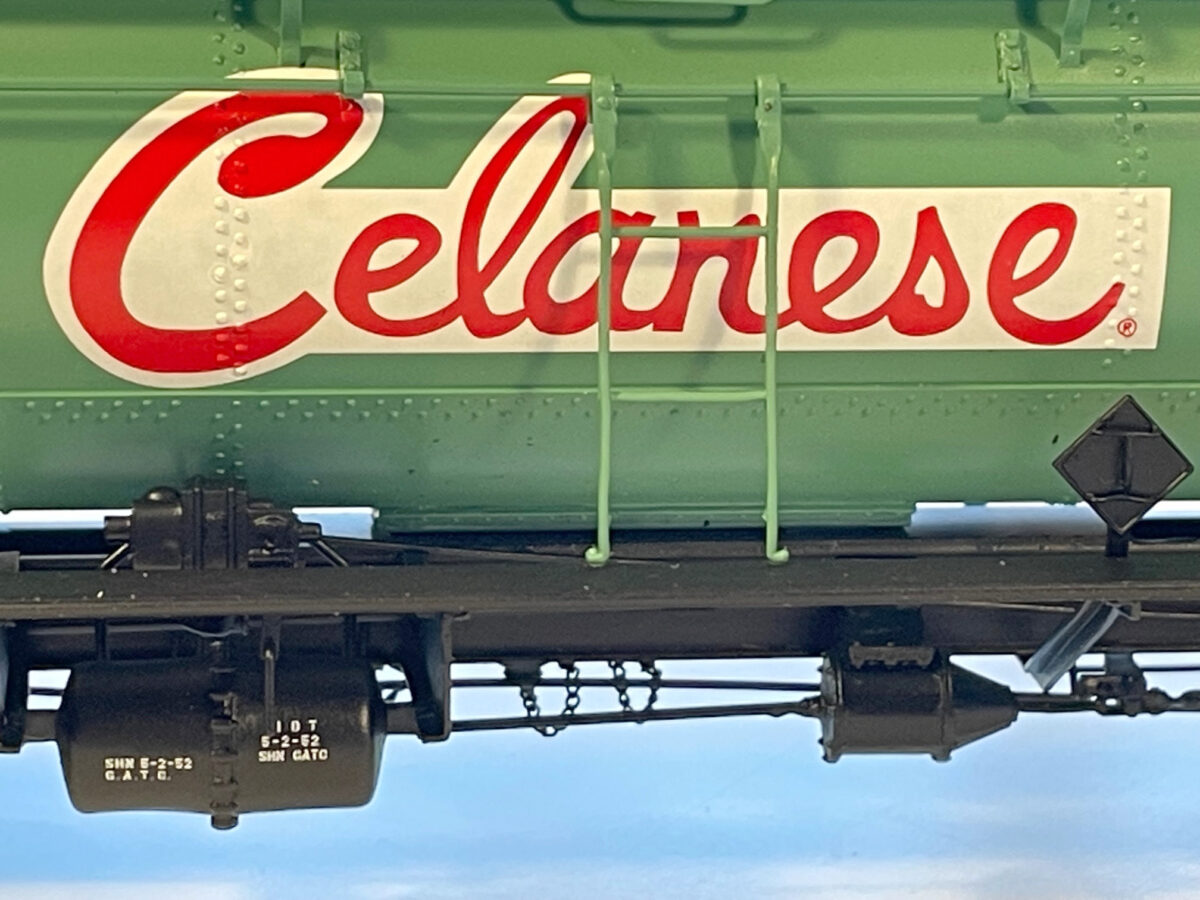
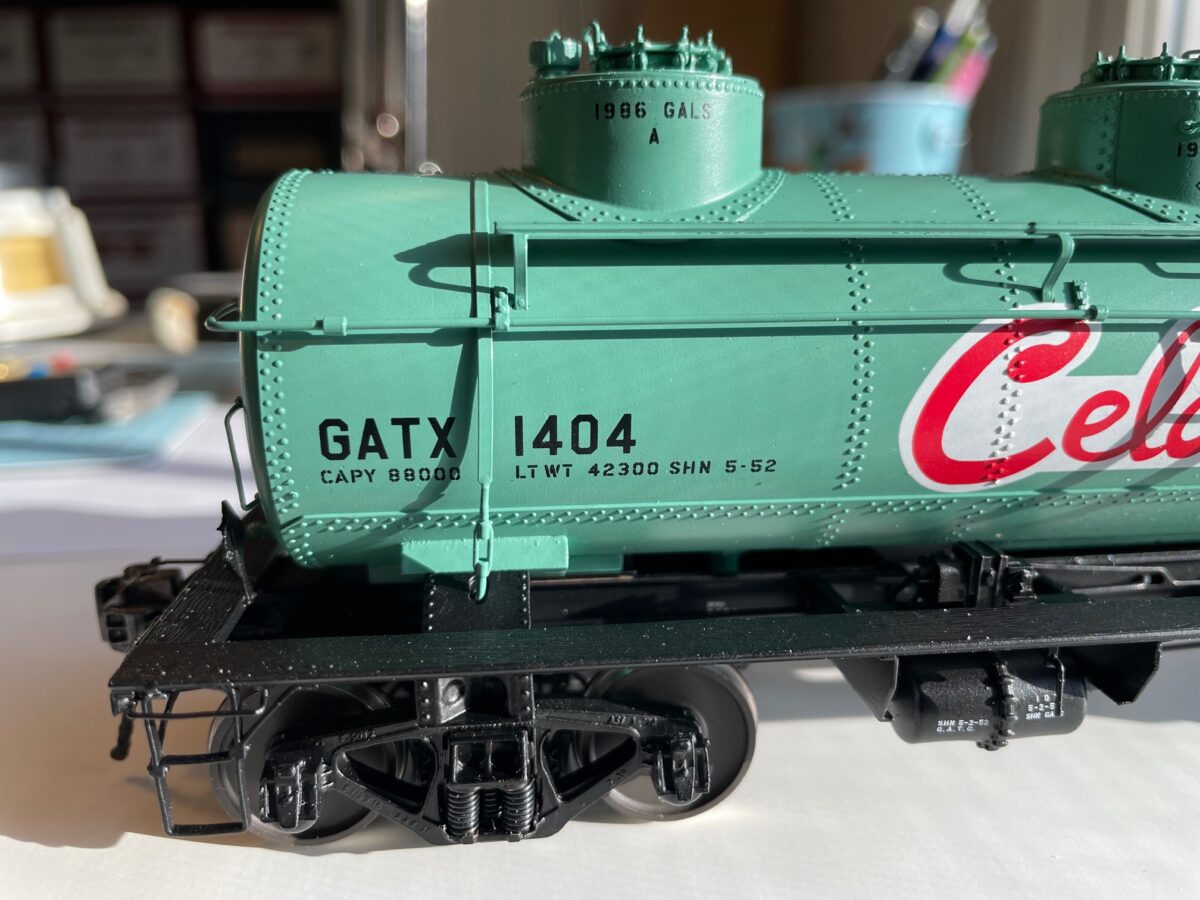
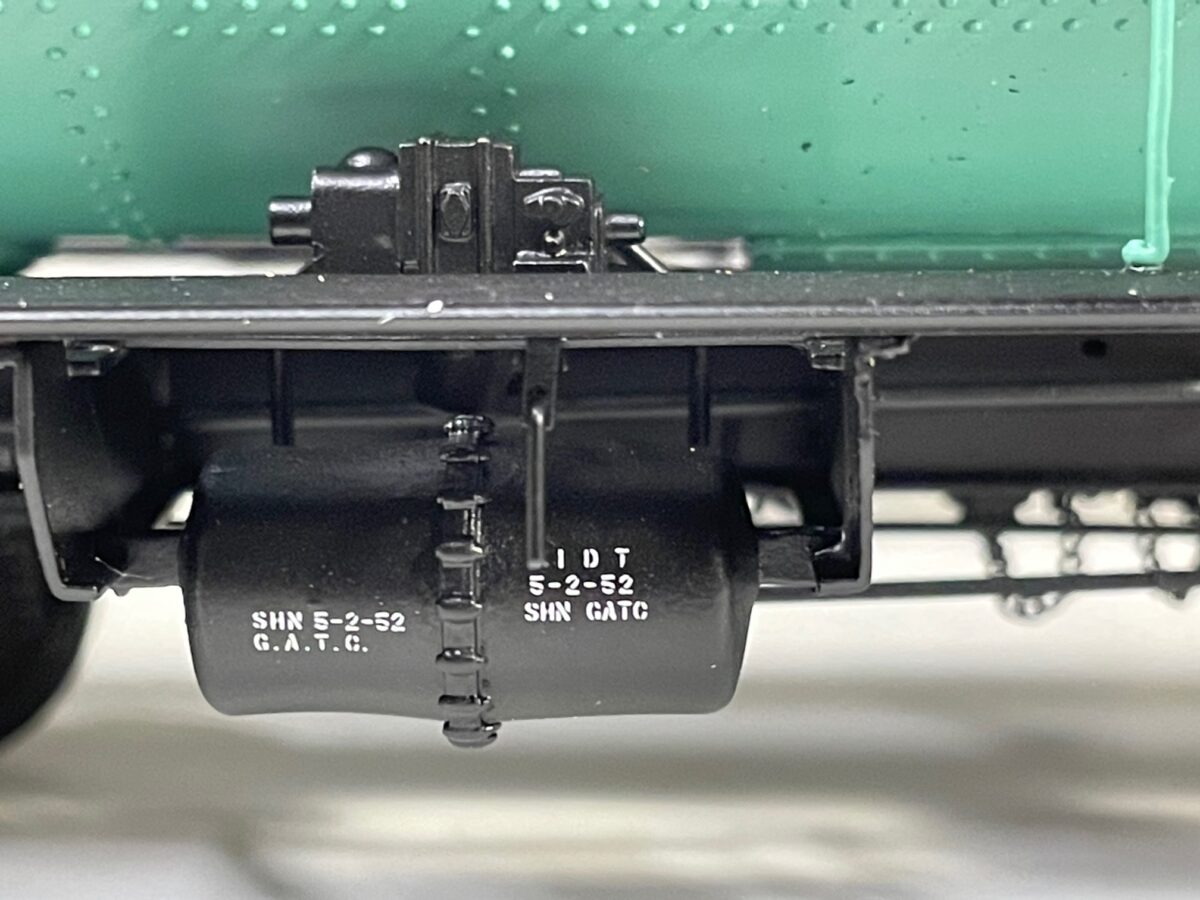
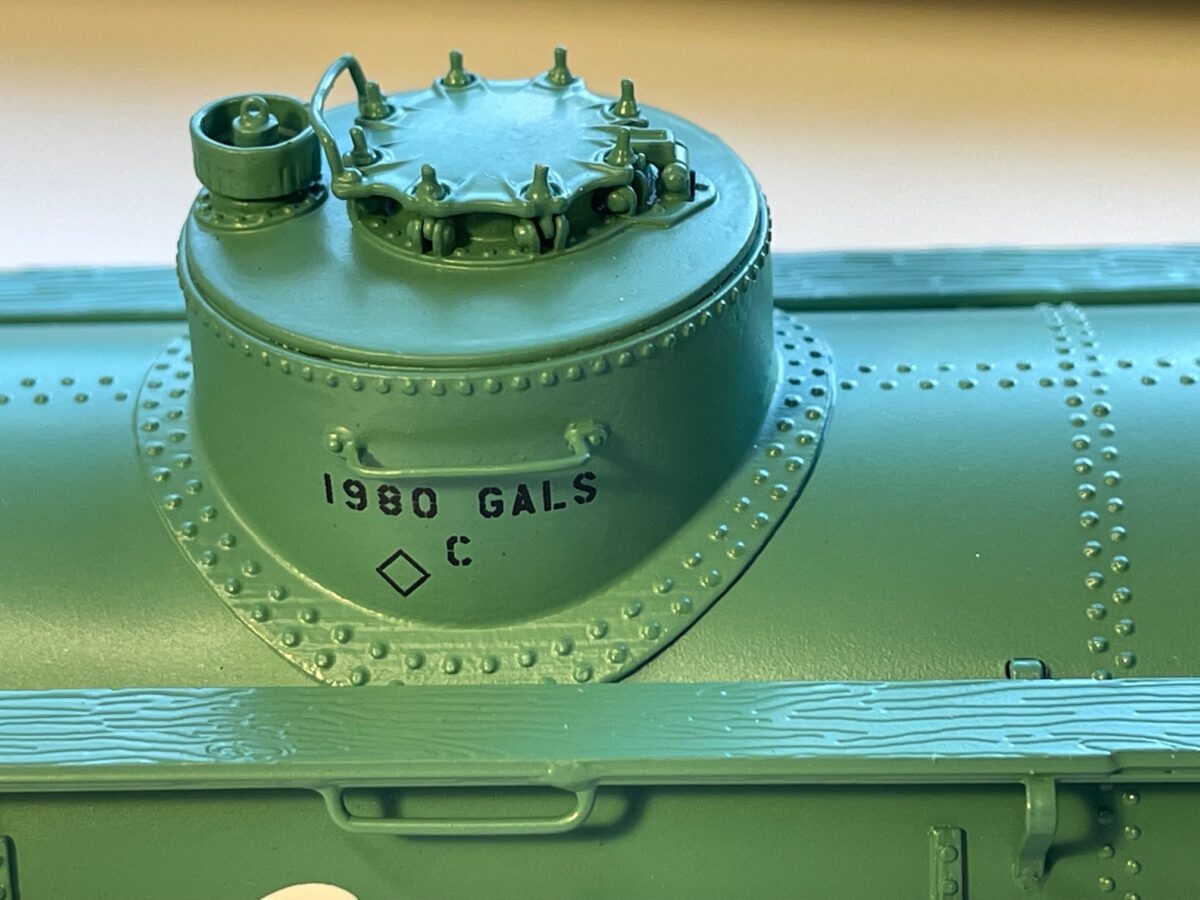
Now to point out some of the engineering standouts. The draft gear is nice. Rather than just leaving a place to mount the oversize Kadee coupler box the box and draft gear are one unit to the bolster.
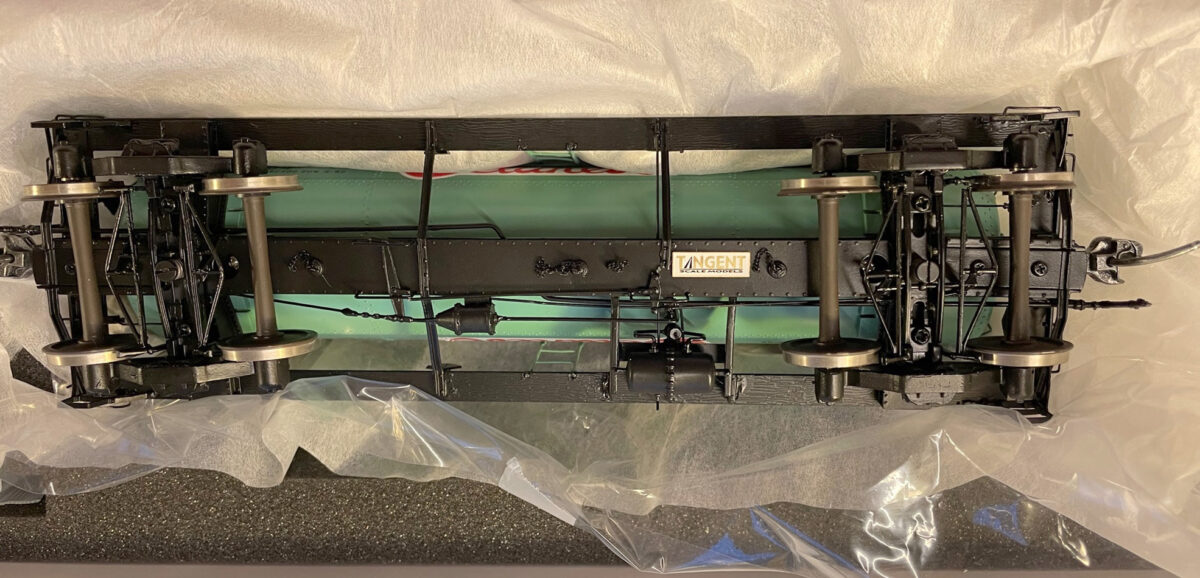
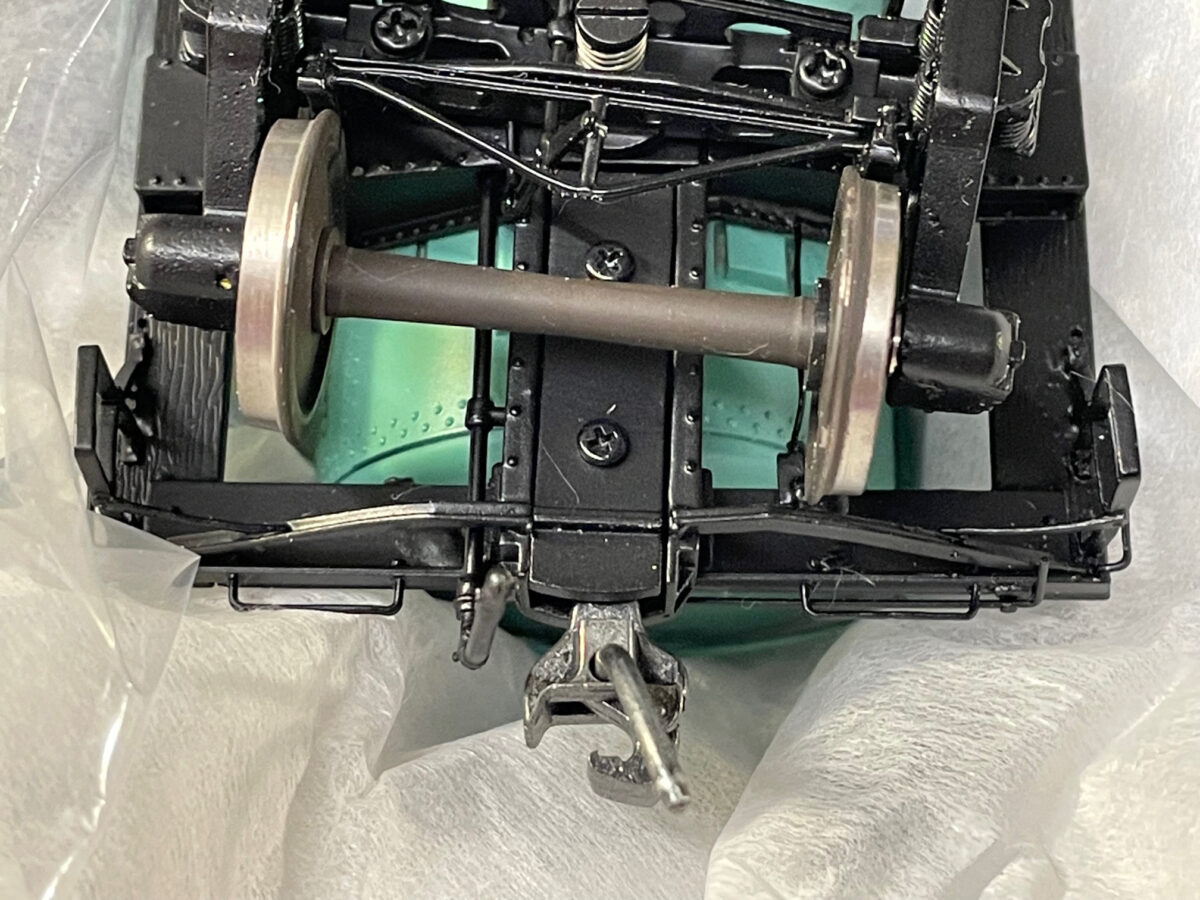
Here it is from the top.
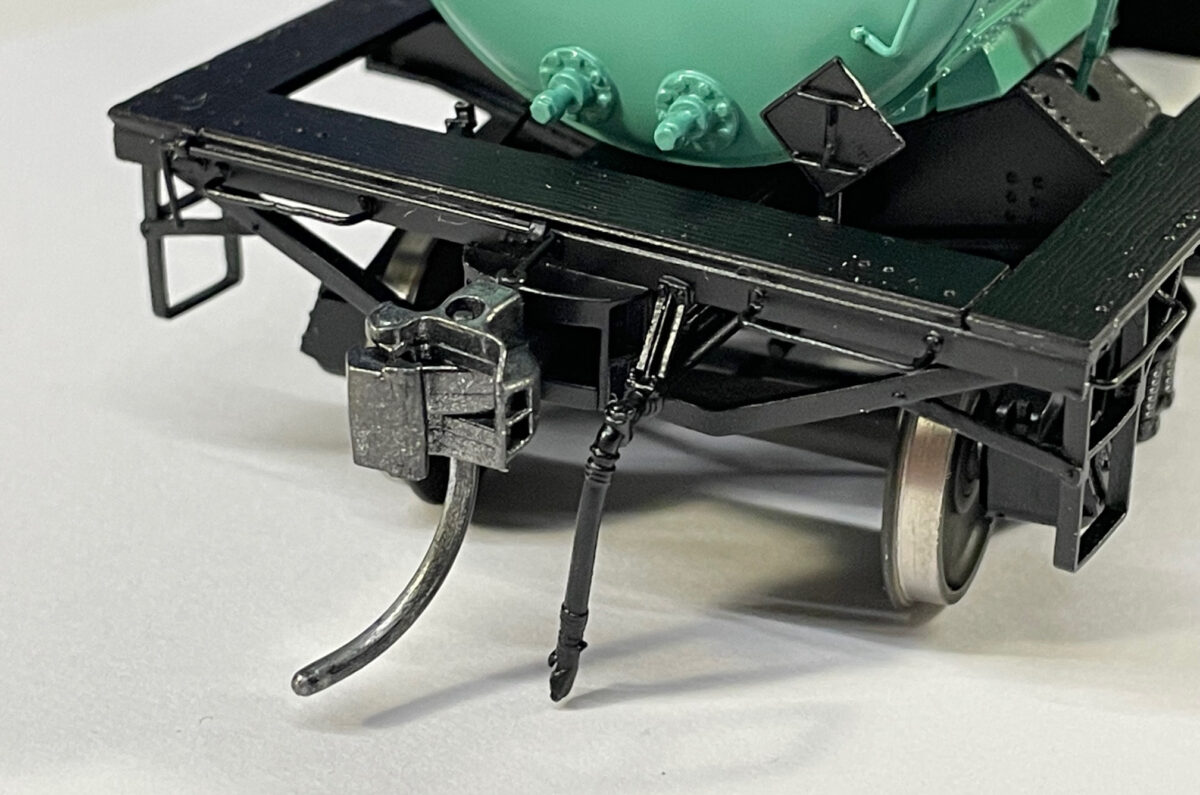
I think it looks even better without the coupler pin.
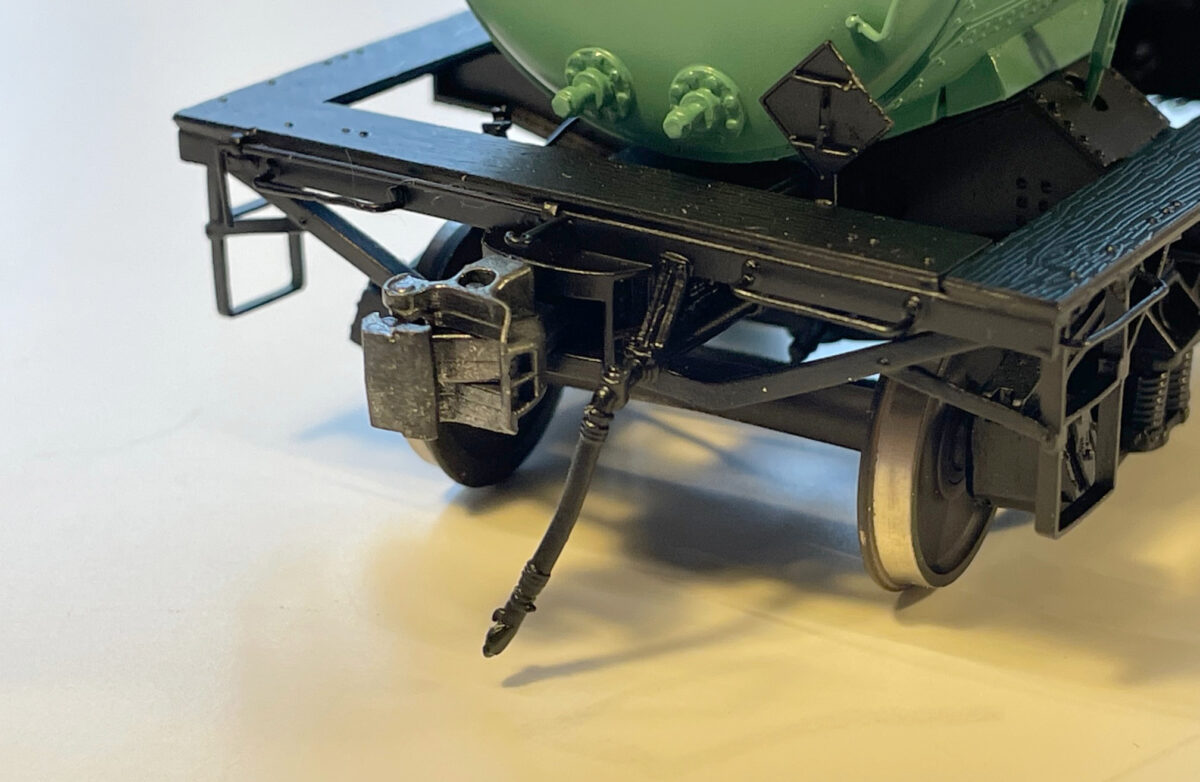
And now just for a comparison, here is the Intermountain ACF 8000 Gal tank car along side the new Tangent Scale model. You can see the Tangent model is shorter ad the tank diameter is smaller.
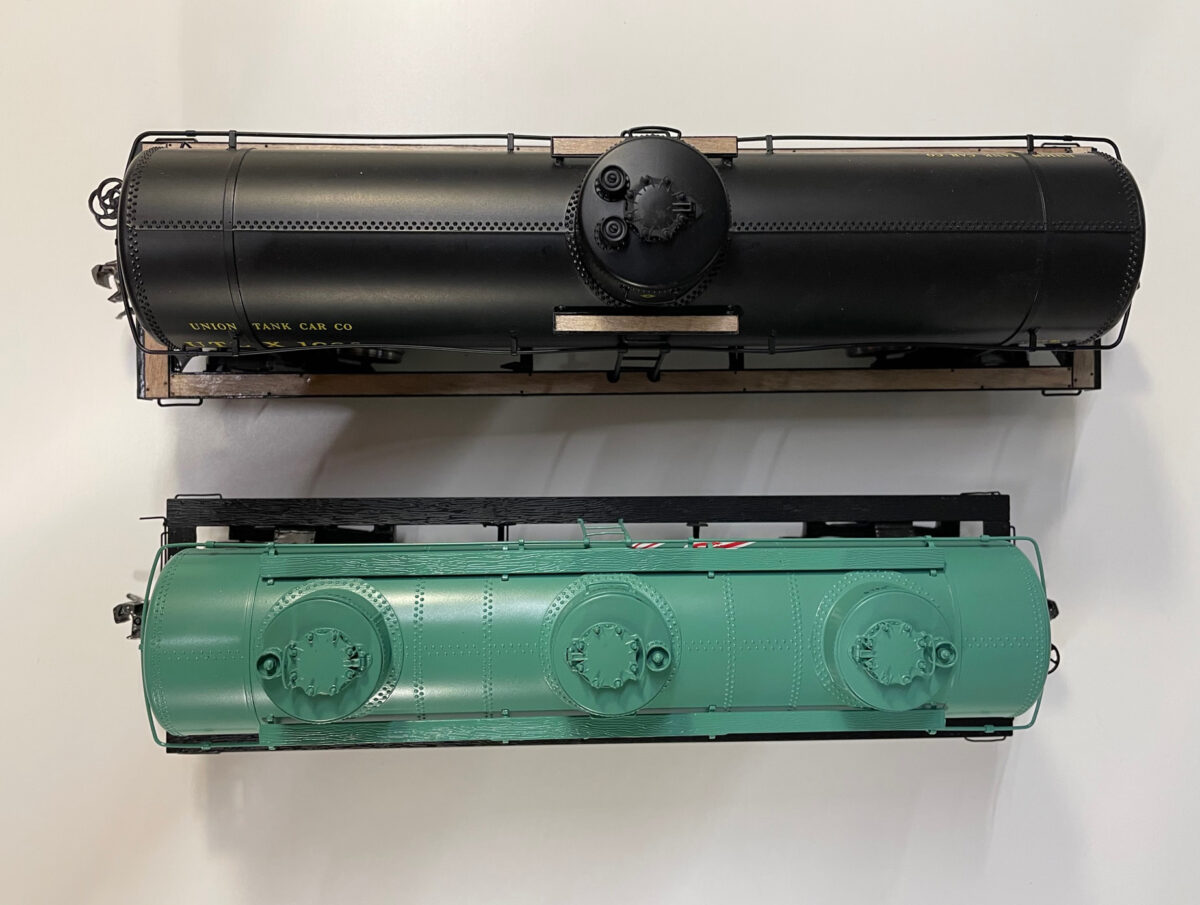
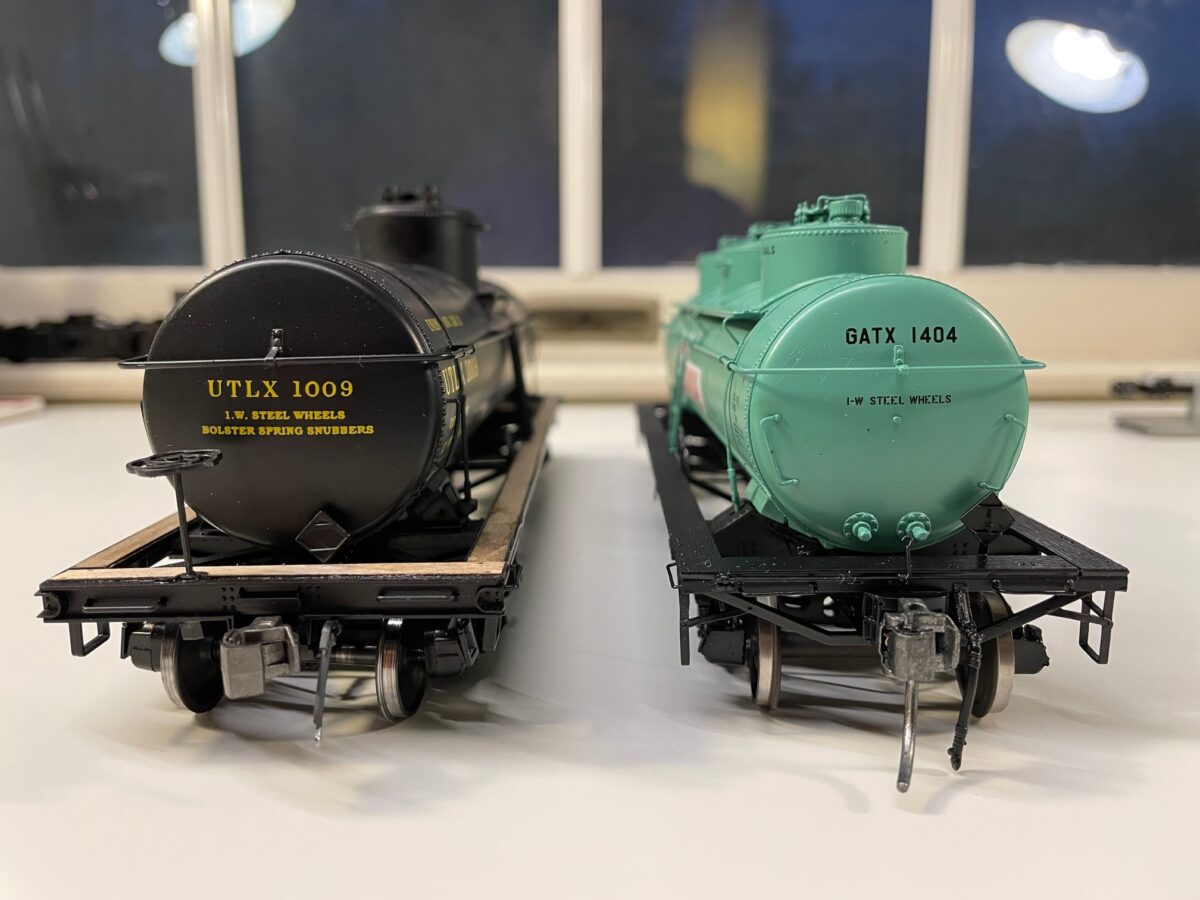
I normally go for more of the Plain-Jane types of freight cars. I almost ordered the 1958 version of the GATX black car. I could have easily backdated the dates to work for my modeling period of 1952. I chose instead to buy a car that I didn’t have to modify at all. Looking at how nice the lettering is applied to the car, I’m glad I did.
Some people might think the the asking price is high. If you consider the added price of a custom paint job and a pair of Proto48 replacement trucks, the price comes in under what some undecorated 30 year old brass cars from Pacific Limited currently sells for. I think this new release from Tangent Scale Models is a bargain.
Since the Tangent Scale Models announcement the other day, a few people have been very vocal that they wanted a different model produced. Well if that is truly the case, they can drop the cash and invest in a new company and produce whatever they want. They don’t seem to do more than just complain anyway. I’m waiting for their announcement of a new company and a new model release.
